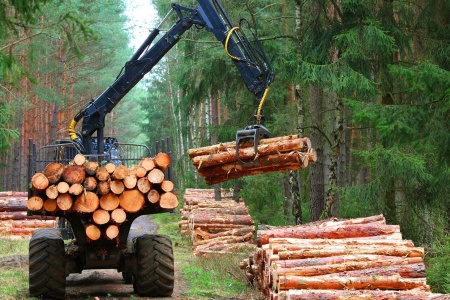
Nature-based solutions in science-based targets
11th Oct 2021
By Christa Anderson and Martha Stevenson, WWF
This post originally appeared on WWF Sustainability Works'
The SBTi will launch new guidance for companies with forest, land, and agriculture emissions early next year. WWF’s Christa Anderson and Martha Stevenson explain how companies can use nature based solutions in their SBTs.
When done right, nature-based solutions for climate mitigation are a genuine win-win. They can enable companies to deliver on their climate goals while supporting nature and addressing societal challenges. But how do they fit into science-based targets? Read on to find out.
What nature-based solutions are relevant to science-based targets?
Nature Based Solutions (NBS) that are most applicable to companies setting science-based targets relate to climate mitigation. These include reducing emissions from deforestation and degradation; reducing emissions from agriculture; restoring forests; improving forest management; and enhancing soil carbon. Additional land-related mitigation actions, such as sustainable diets and reducing food loss and waste, can also be relevant to companies. As such, they can be incorporated into science-based targets, even though they are not usually included in definitions of NBS.
Which companies can use NBS in their science-based targets?
Companies with forest, land, and agriculture (FLAG) emissions in their supply chains can include these in their inventory and abatement target setting. Companies that choose this approach can then pursue reduction activities within NBS to meet their science-based targets within their supply chains. This can include stopping deforestation and conversion; reducing on-farm emissions like fertilizer use and manure management; reducing food waste; and changing product mix.
However, NBS for climate are not always a first-choice solution for companies without land sector emissions. In particular, corporate funding for NBS should not be used to avoid or delay action to reduce emissions from fossil fuels within a company’s operations or supply chain. So, a company without land-based emissions in its supply chain cannot use NBS to meet near-term SBTi targets. Once a company’s SBTi abatement target requirements have been met, it may explore investment in NBS toward future nature targets (such as through the Science Based Targets Network) or toward mitigation goals that go beyond science-based targets, as outlined in World Wildlife Fund and Boston Consulting Group’s Blueprint for Corporate Action on Climate and Nature.
New opportunities for NBS in science-based targets
WWF, a founding member of SBTi, is developing new land sector guidance for FLAG emissions. This will provide specific agriculture, forestry, and other land-use (AFOLU) mitigation pathways for companies with land sector emissions in their supply chains. These will include emissions reductions as well as removals within the land sector. The guidance will detail overall AFOLU sector mitigation pathways as well as 10 specific mitigation pathways for major commodities: beef, chicken, dairy, maize, palm oil, pork, rice, soy, wheat, and timber and wood fiber. In parallel and in coordination, the Greenhouse Gas (GHG) Protocol is developing new guidance for corporate land-use and removals accounting. This new, comprehensive guidance on accounting and target setting for land-based emissions give companies the opportunity, and a requirement, to bring NBS—both emissions reductions and removals—into their mitigation targets.
A groundbreaking new opportunity for NBS arrives later this month in the form of the SBTi’s Net Zero Standard. The first global standard for corporate net zero targets will include criteria for abatement (within supply chain actions); neutralization (removals for limited residual emissions); and compensation (mitigation beyond net zero). The guidance will also detail appropriate NBS opportunities for all companies. Businesses with land sector emissions will be able to deploy NBS directly toward net zero. Those without must focus first on non-NBS abatement measures to meet their SBTi targets. However, they may adopt NBS on the path to net zero through compensation or neutralization.
With new FLAG and net zero guidance forthcoming, companies (especially those with land sector emissions in their supply chains) will have novel tools to deploy NBS to meet their near-term science-based targets and their net zero targets.
Land sector emissions guidance for companies
While GHG Protocol guidance for land sector emissions is under development, we recommend the following guidance documents for reference:



